Issue Archive
Table of Contents
BLOOD COMMENTARIES
REVIEW ARTICLE
Immune alterations in myeloma evolution and outcomes: quo vadis?
The pathogenesis of multiple myeloma (MM) and its precursor monoclonal gammopathy of undetermined significance is linked to an aging immune system. In this review, Dhodapkar and Paiva, experts in the field, provide a comprehensive and insightful summary of recent relevant research advances in preclinical and clinical settings that furthers our understanding of the immune microenvironment in myeloma and offers a framework for future benchmarking of immune biomarkers and integration into clinical risk models. This review should be a valuable resource to clinicians and researchers alike in this highly relevant aspect of MM biology.
CLINICAL TRIALS AND OBSERVATIONS
A phase 2 randomized study of modakafusp alfa as a single agent for patients with relapsed/refractory multiple myeloma
Clinical Trials & Observations
Menin inhibition with revumenib for NPM1-mutated relapsed or refractory acute myeloid leukemia: the AUGMENT-101 study
Clinical Trials & Observations
Relapsed/refractory (R/R) nucleophosmin 1 (NPM1)–mutated acute myeloid leukemia (AML) has a generally favorable prognosis, but relapse remains a significant therapeutic challenge. Arellano and colleagues report the results of the phase 2 AUGMENT trial, which evaluated the menin inhibitor revumenib in heavily pretreated patients with relapsed AML who were largely preexposed to venetoclax. They observed an overall response rate of 47%, with patients with concomitant IDH1 or IDH2 mutations experiencing the best results. These promising results require confirmation in large phase 3 trials.
HEMATOPOIESIS AND STEM CELLS
Correlates and consequences of clonal hematopoiesis expansion rate: a 16-year longitudinal study of 6976 women
Clonal hematopoiesis of indeterminate potential (CHIP) is associated with increased risk of malignancy, cardiovascular disease, and all-cause mortality. In this longitudinal study involving 6976 women from the Women’s Health Initiative Long Life Study, Pershad and colleagues report specific determinants that contribute to expansion of CHIP clones over a 16-year period in this population. The rate of clonal expansion, a predictor of malignant progression and mortality, is associated with initial clone size, specific mutations, single-nucleotide polymorphisms, telomere length, and interleukin-6 signaling, highlighting the importance of developing dynamic scores to enhance risk stratification.
IMMUNOBIOLOGY AND IMMUNOTHERAPY
Comparison of the safety profiles of CD19-targeting CAR T-cell therapy in patients with SLE and B-cell lymphoma
Brief Report
CD19-directed chimeric antigen receptor (CAR) T-cell therapy has significantly expanded the therapeutic options for B-cell lymphoma and has shown promising results for the treatment of systemic lupus erythematosus (SLE). Müller and colleagues report the safety profile of CAR T cells in these 2 diseases, finding significantly milder adverse events in patients with SLE, including the absence of high-grade cytokine release syndrome, immune effector cell neurotoxicity syndrome, or immune effector cell–associated hemophagocytic lymphohistiocytosis–like syndrome. Immune reconstitution occurred earlier in patients with SLE than in patients with lymphoma, highlighting the importance of disease-specific dynamics when toxicity is considered.
MYELOID NEOPLASIA
RBM15-MKL1 fusion protein promotes leukemia via m6A methylation and Wnt pathway activation
Acute megakaryoblastic leukemia (AMKL), a relatively common form of acute myeloid leukemia in children with Down syndrome but rare in other children, is primarily driven by chromosomal translocations that result in fusion proteins, including CBFA2T3-GLIS2 and RBM15-MKL1. Mayday and colleagues present new insights into the basis of AMKL driven by the RBM15-MKL1 fusion protein. Their study reveals that Wnt signaling and METTL3 activity are essential for leukemia and shows that these pathways are novel therapeutic targets in AMKL.
THROMBOSIS AND HEMOSTASIS
LRRC8 complexes are ATP release channels that regulate platelet activation and arterial thrombosis
The mechanisms by which platelets change shape and volume during activation are poorly understood. In this work, Tranter et al identify the mechanosensitive volume-regulated anion channel with its protein subunit leucine-rich repeat–containing 8 (LRRC8) as an ATP release channel and a critical regulator of these processes. Furthermore, pharmacological inhibition of the LRRC8 complex prevents thrombus formation and spare bleeding in mice, identifying this pathway as a promising new target for antithrombotic treatment.
TRANSPLANTATION
A single dose of a CD137 antibody–drug conjugate protects rhesus macaque allogeneic HCT recipients against acute GVHD
Graft-versus-host disease (GVHD) remains one of the most severe complications of allogeneic hematopoietic stem cell transplantation (SCT). In this preclinical investigation, Gerdemann et al describe a promising new immunotherapeutic approach, showing that a single dose of CD137 antibody–drug conjugate targeting activated T cells can prevent acute GVHD while preserving immune reconstitution in a nonhuman primate model of SCT. This novel targeted approach may prevent the use of prolonged immunosuppressive therapies, setting the basis for future human clinical trials.
BLOOD WORK
ERRATUM
-
Cover Image
Cover Image
![issue cover]()
Hematoxylin and eosin–stained section from a mouse that underwent a transplant of murine RBM15-MKL1 acute megakaryoblastic leukemia cells, showing infiltration of liver with leukemia blasts. Treatment with a methyltransferase 3 inhibitor or Wnt inhibition via
FZD knockdown provides therapeutic benefit. See the article by Mayday et al on page 1096. - PDF Icon Front MatterFront Matter
- PDF Icon Table of ContentsTable of Contents
- PDF Icon Editorial BoardEditorial Board
Advertisement intended for health care professionals
Email alerts
Advertisement intended for health care professionals


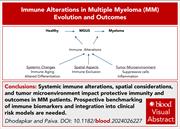
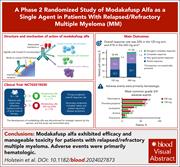
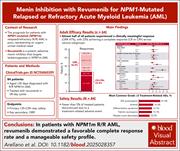
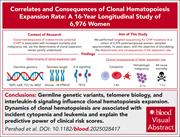
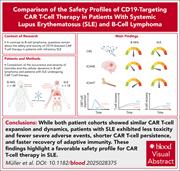
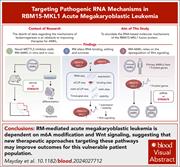
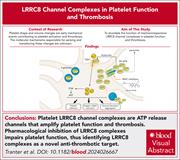
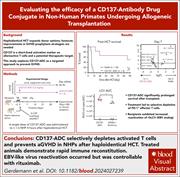

NPM1: the ultimate target in AML
Clinical Trials & Observations